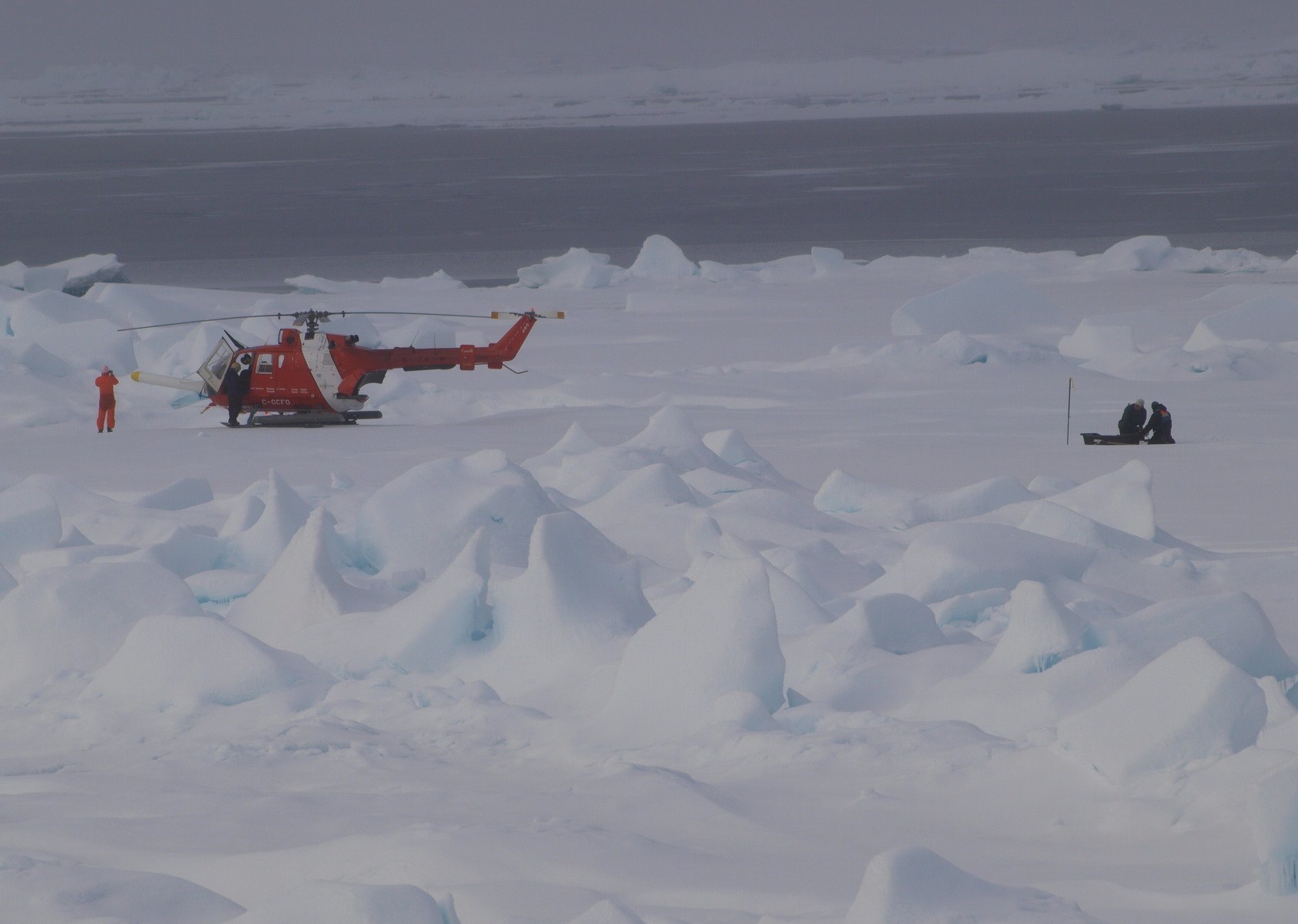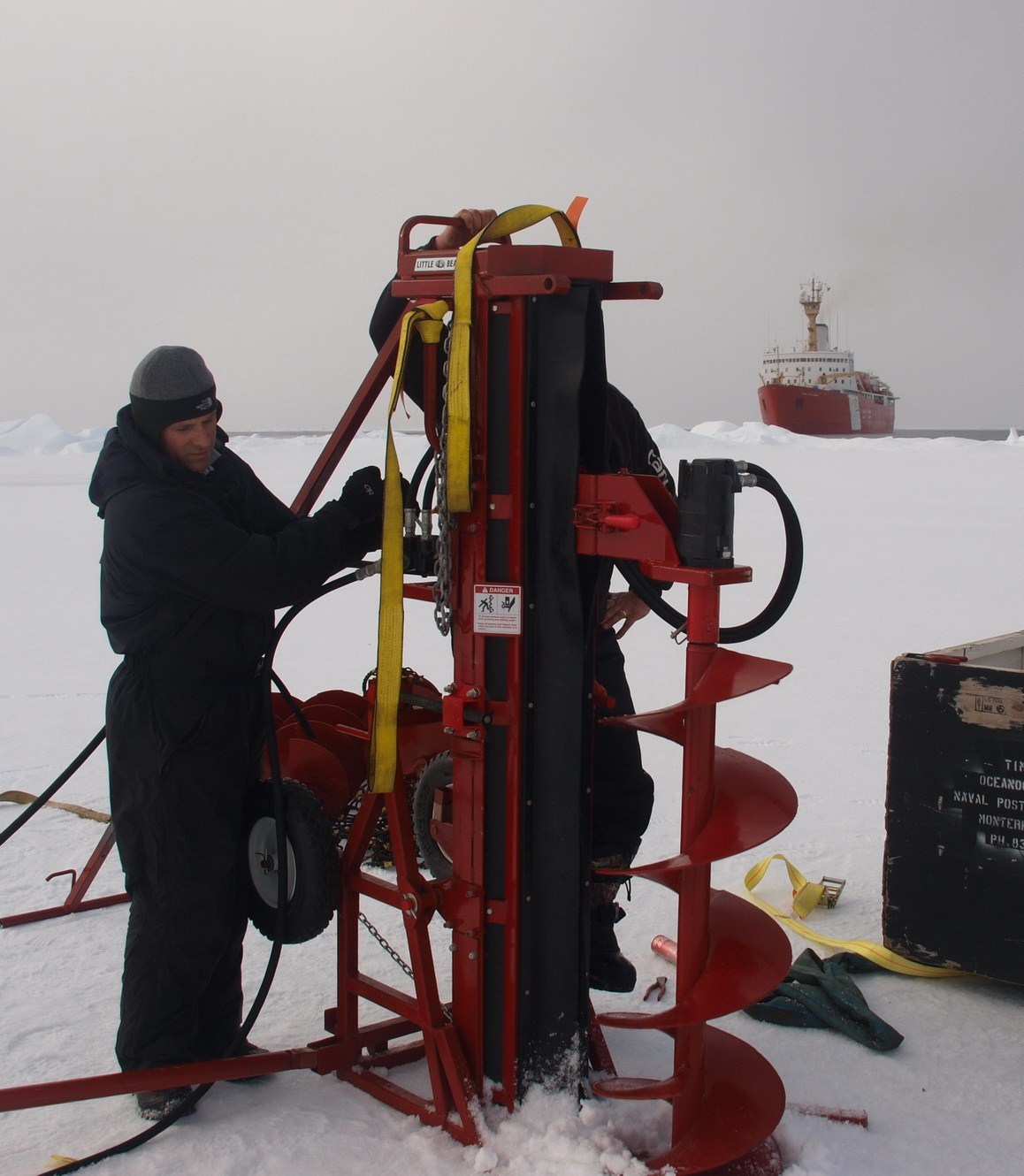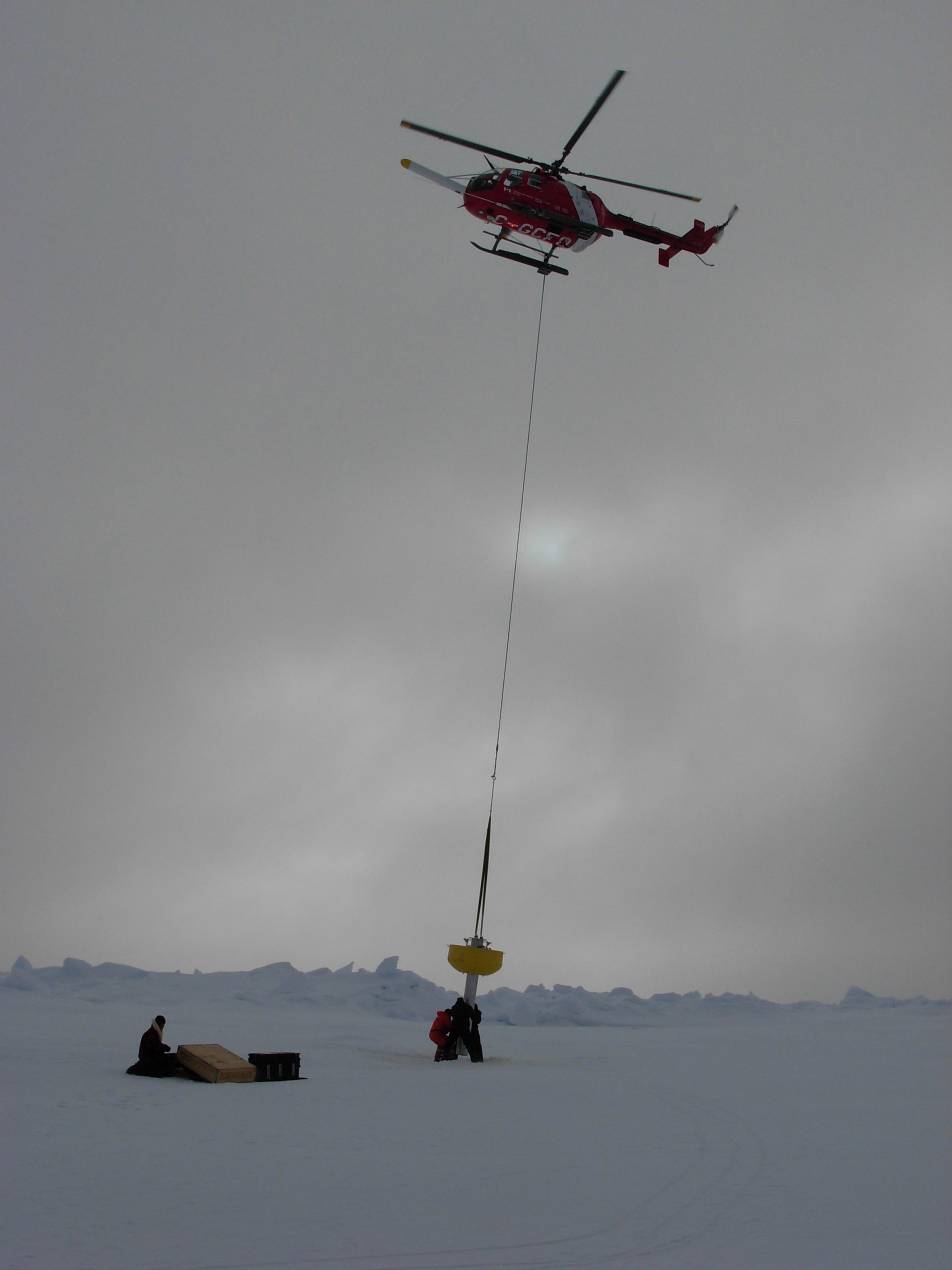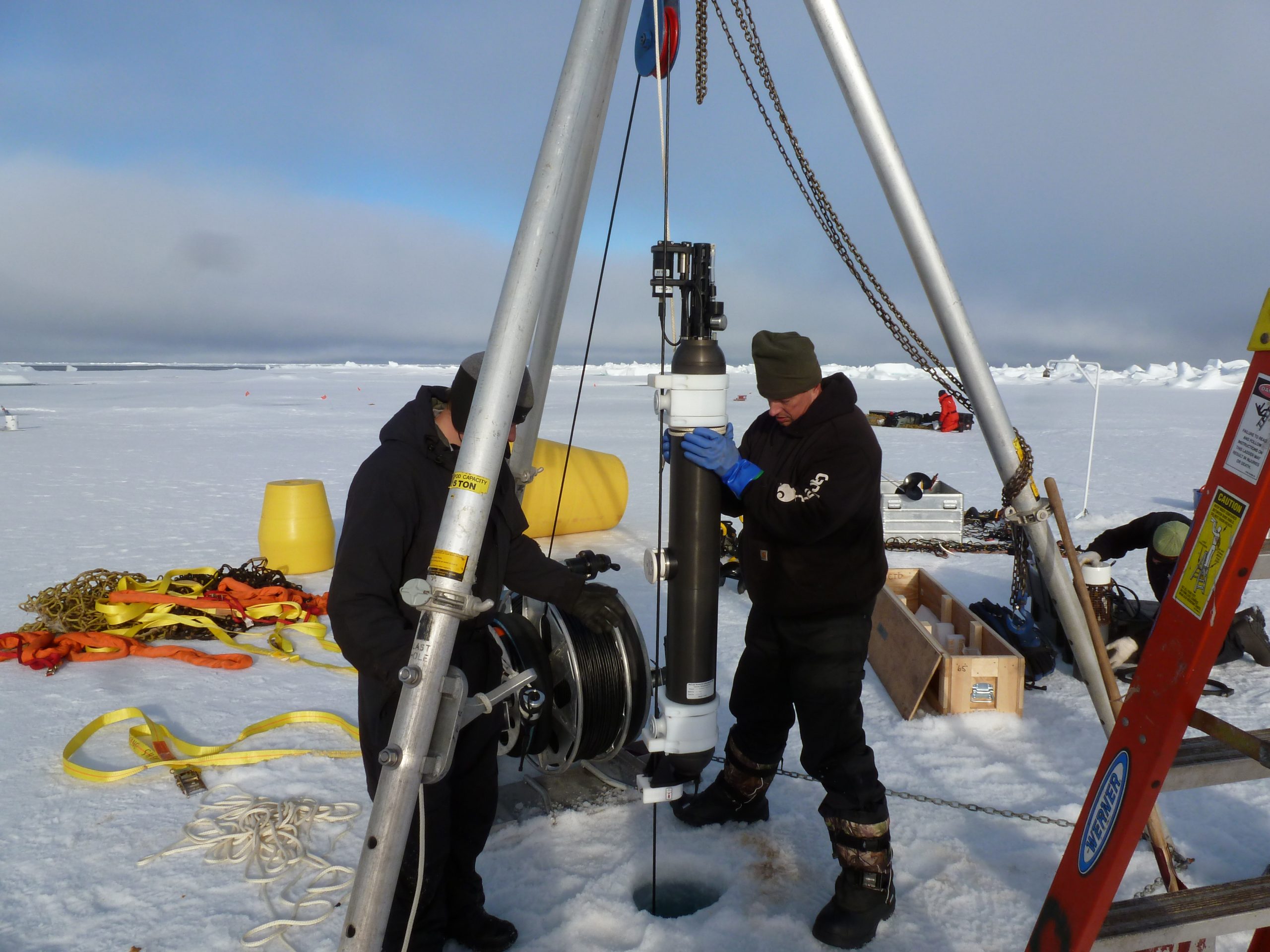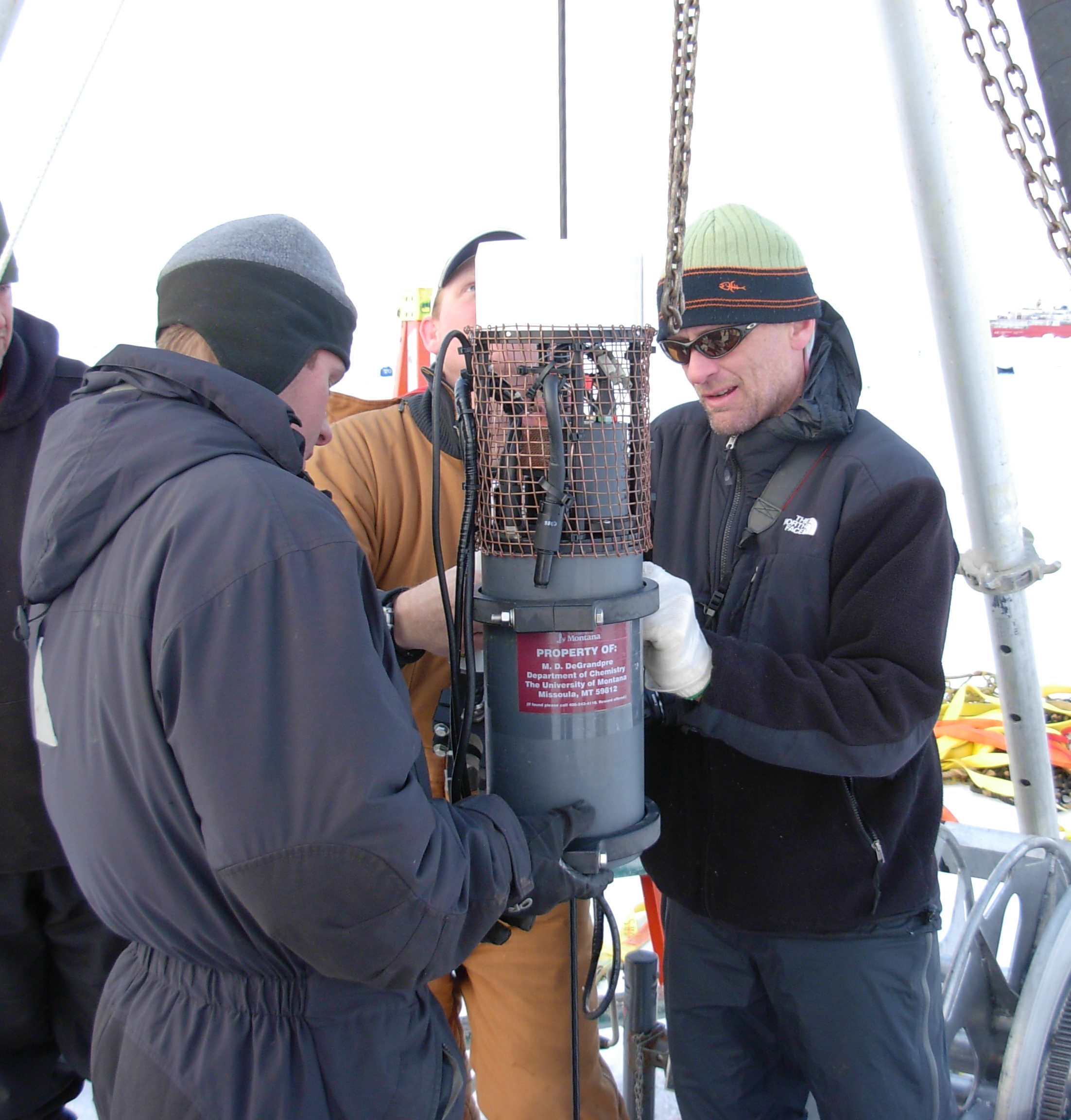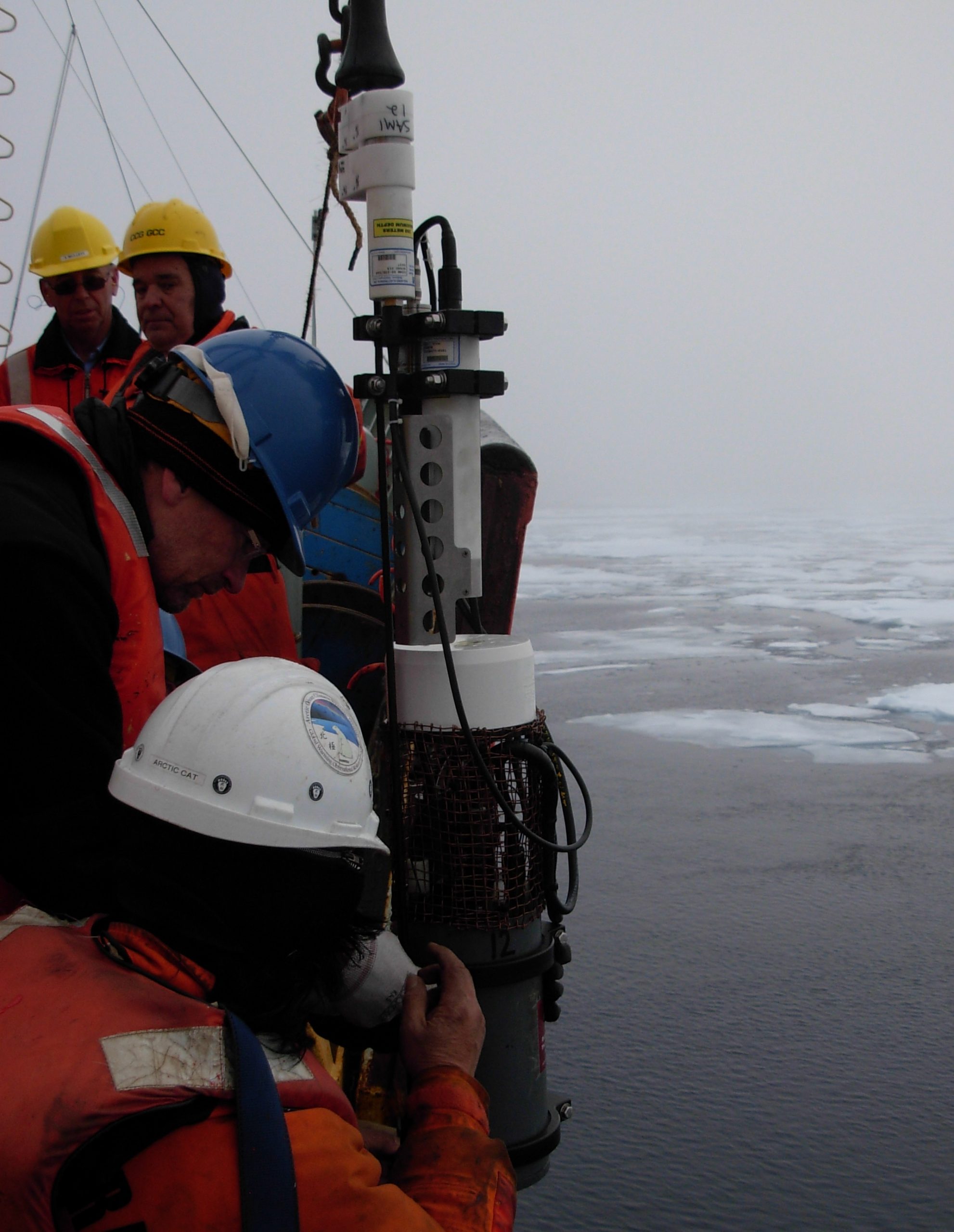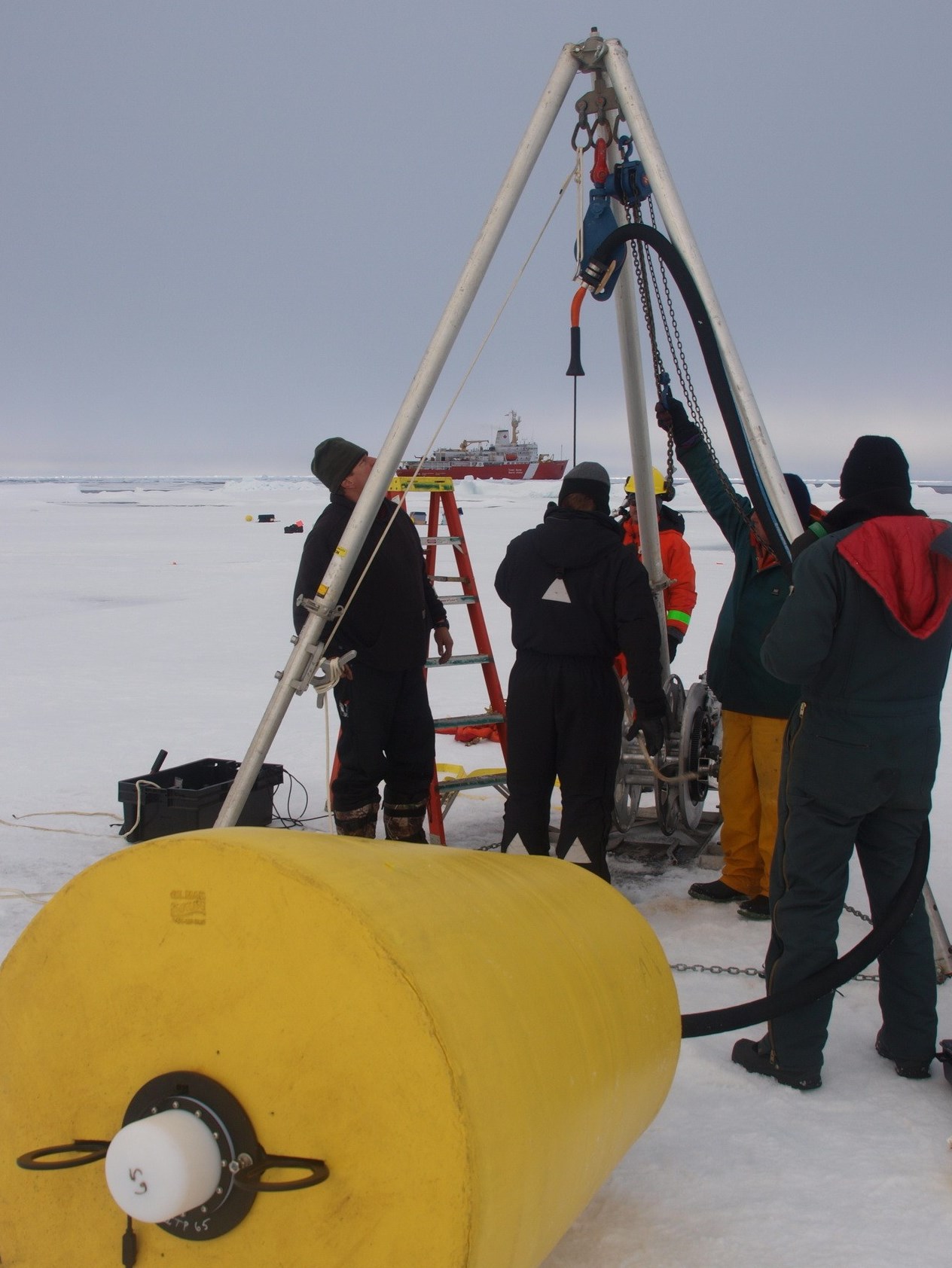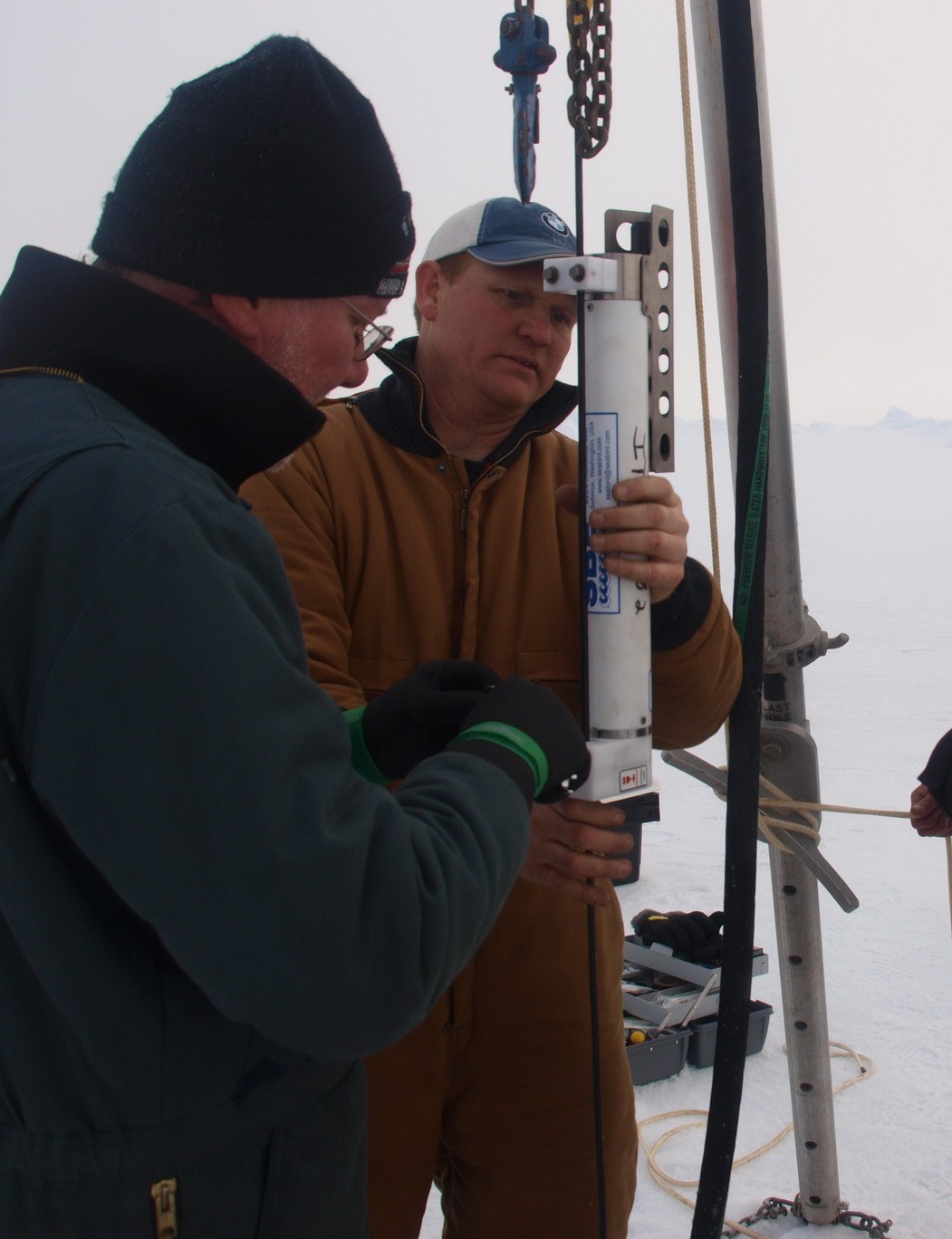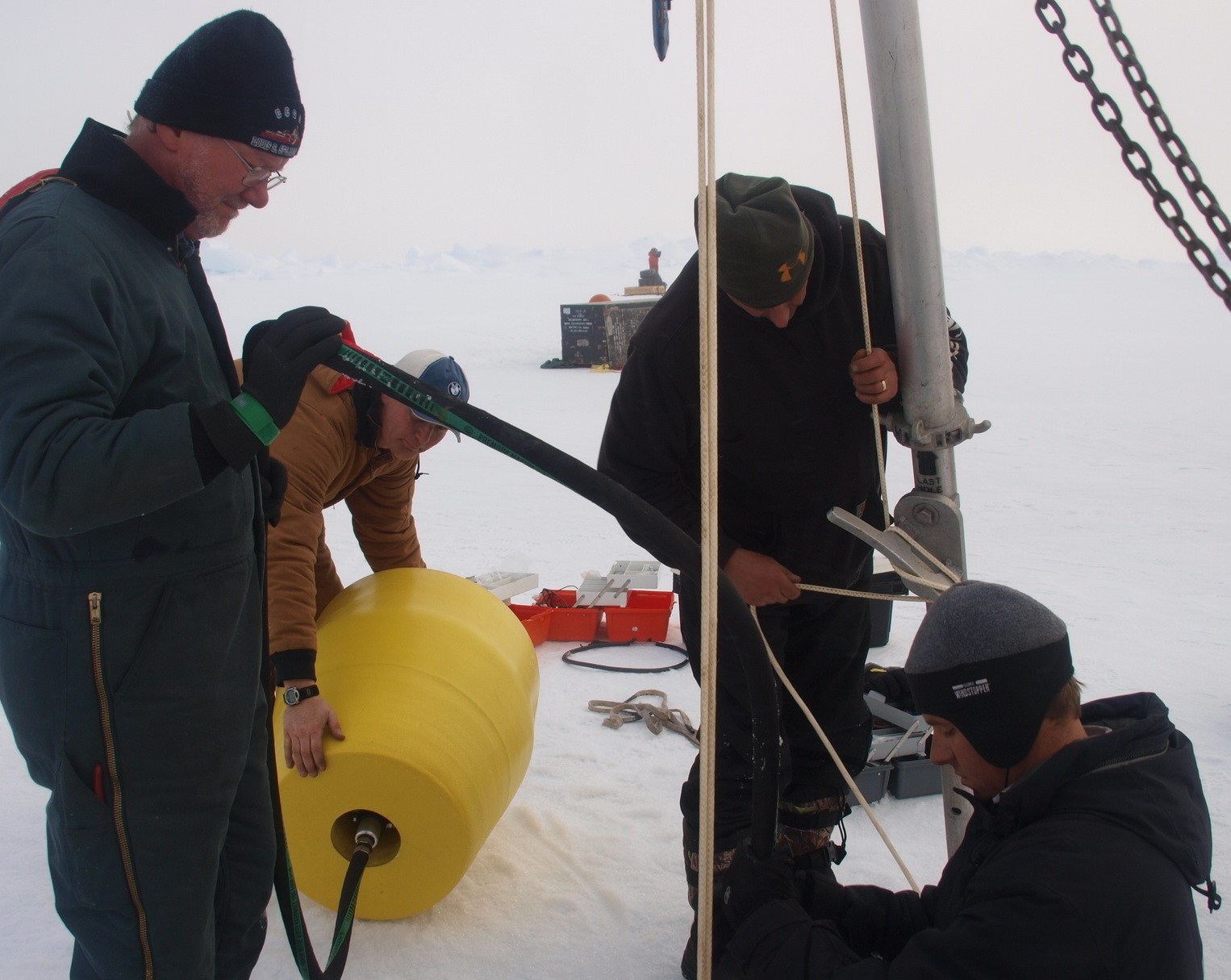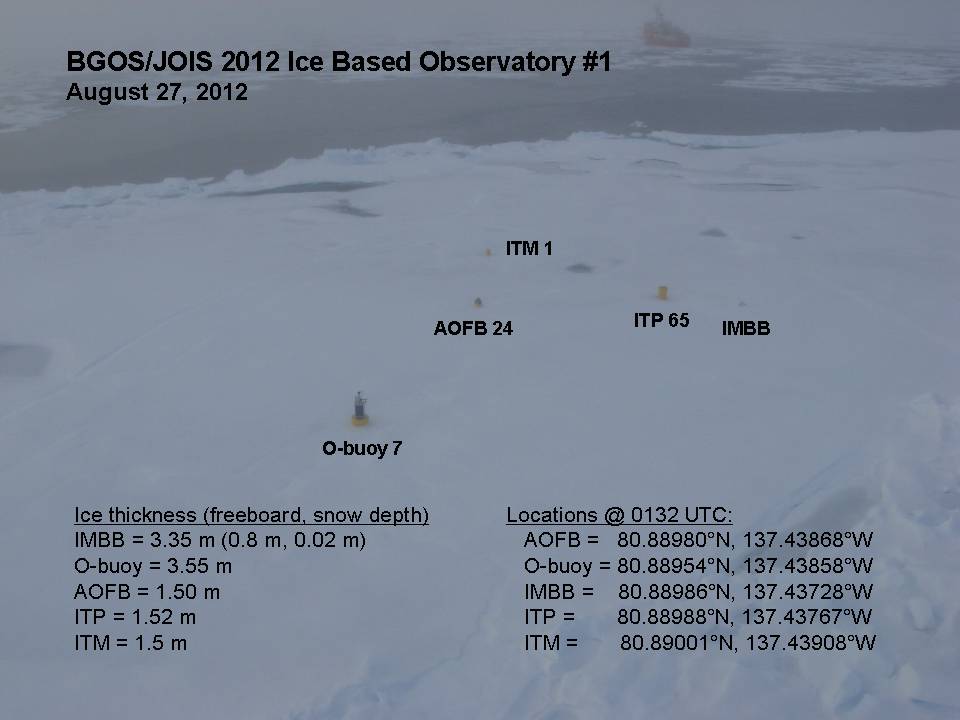ITP65 Deployment Operations
Ice-Based Observatories (IBOs) consisting of several automated buoys with complementary instrumentation provide coincident data from the atmosphere, sea ice, and ocean from the sites that they are deployed and provide opportunities for cross correlating observations. As part of the first IBO deployed during JOIS 2012, ITP 65 included biosuite sensors on the profiler and a SAMI pCO2 clamped on the wire to further increase the variables measured at the IBO site. In addition, while the buoys making up the IBO were being deployed, other scientists obtained detailed ice surveys, core samples, and made other measurements providing a detailed description of the initial conditions at the site.
Ice floe selection for IBOs can be tricky as the spacing requirements of the buoys may require separation of more than 25-100 m so typically larger sturdy floes are desired. A relatively flat surface with not too much snow cover also facilitates the hauling and deployment operations on the ice. This year was a particularly bad year for ice in this region, so when an apparently decent floe appeared in the morning near the ship a quick survey was taken using the helicopter to land on the ice which was drilled to determine a depth greater than 1.5 m at several sites.
Two hours later, after staging all of the equipment loads for the helicopter to ferry to the selected site, the deployment team was landed on the floe. Several groups worked simultaneously on different buoy deployments. First, the portable 14” hydraulic auger was used by the ITP team to bore through the 3.55 m thick ice for the O-Buoy, that buoy lowered into position by the helicopter, then the complicated superstructure assembled by the O-buoy team. Then the auger was moved and used first to drill the hole for the AOFB, the tripod positioned, and that buoy installed in less than an hour. Then the tripod was moved to the ITP hole and that operation completed 4 hours later, and then to the ITM site for a half hour deployment. Meanwhile, the IMB was deployed by a third team.
More information and photos on the deployment operations are also available at: https://archives.whoi.edu/beaufortgyre/www.whoi.edu/page.do@pid=111498.html.
